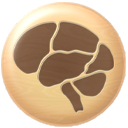Testing OmniGrowl Alerts:
There are two ways to test OmniGrowl on the Test tab of OmniGrowl. The top section allows you to "fake" the time and date and the frequency that OmniGrowl checks (the "idle time").
The second way uses buttons to call periodic notification checks right then. Some of these buttons use option key modifiers.
Please note that the normal idle checking is not done while OmniGrowl is the active application and its window is open, unless the option to allow idle checking with test tab active is enabled.
After turning the test date either on or off, it may be necessary to reset caches.
Debug Commands:
There are a few commands related to debugging that can be activated from the keyboard with the main window active, even while OmniGrowl is in background mode:
⌘-D activates Debug Mode for extra logging.
⌘-L copies the internal log to the clip board.
⌥⌘-R loads recurring events now
⌥⌘-F will forget your admin password.
Debug mode can also be toggled on the Test tab. In addition to internal logs, debug mode also logs to the console log.
Sleep Issues:
The screen saver should be set to activate 2 minutes before screen and system sleep in order to allow the system to sleep. Checks are made for display sleep as well but they are not as reliable.
Earlier versions of OmniGrowl may have prevented Leopard laptops from sleeping according to energy saver settings. Now, when "allow some checks while away" is not selected this problem should be resolved. Please see the tool tip for the "allow some checks while away" option for further details.
Turning off S.M.A.R.T. checking may also help.
Please note that there may be numerous other culprits. This is a widespread problem with OS X 10.5+ discussed in many long threads on Apple discussions. Refer also to the knowledge base article Why your Mac might not sleep or stay in sleep mode.


